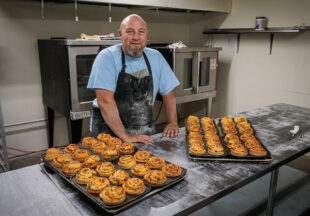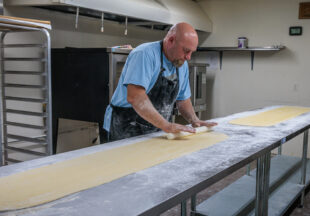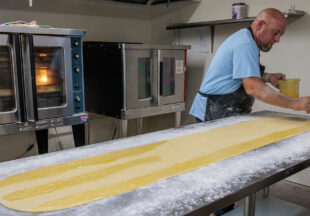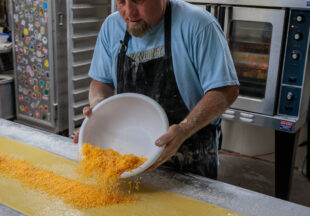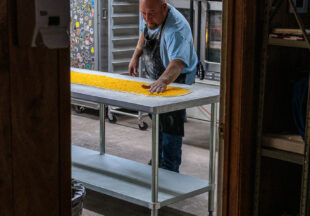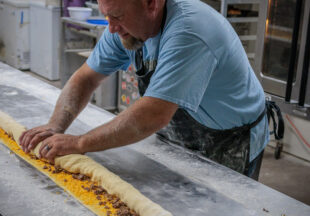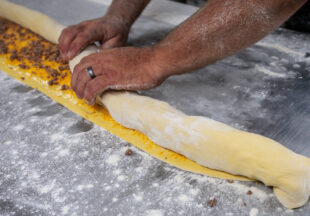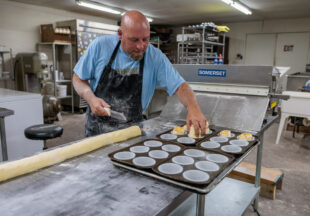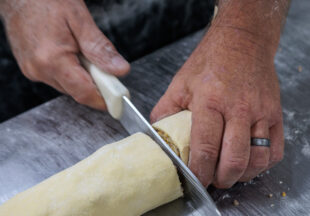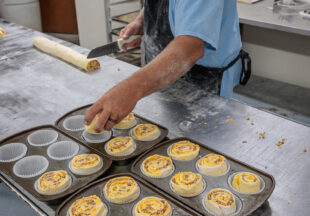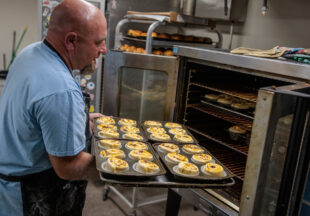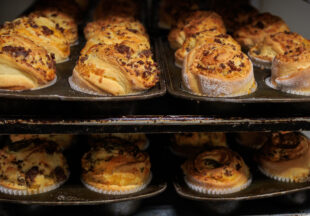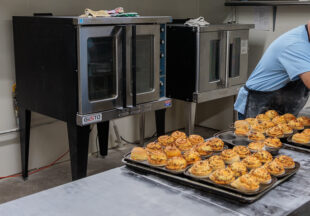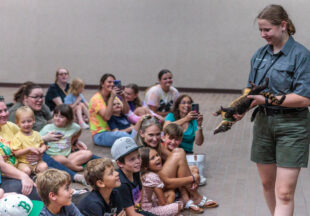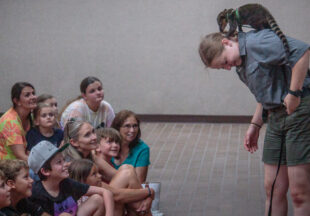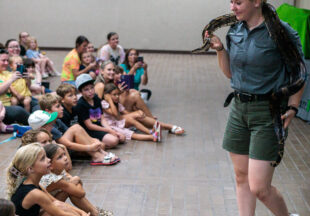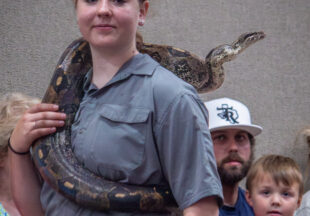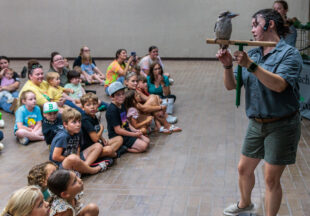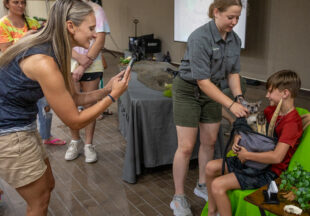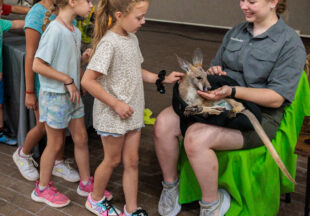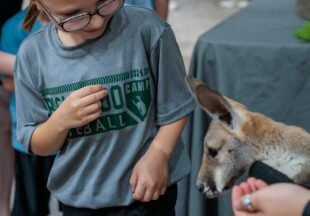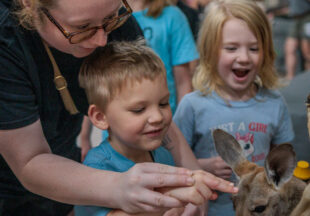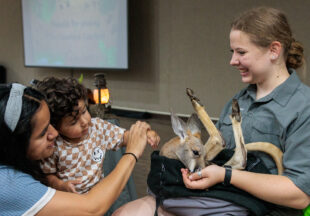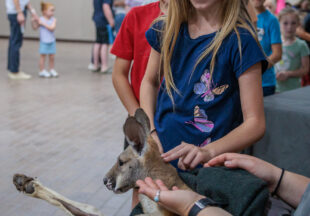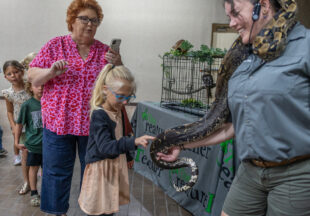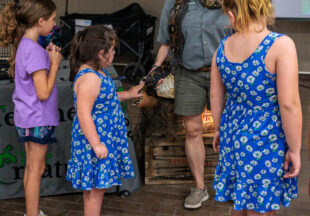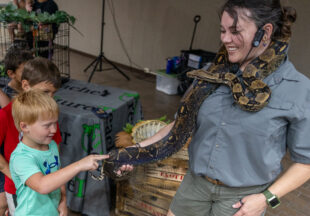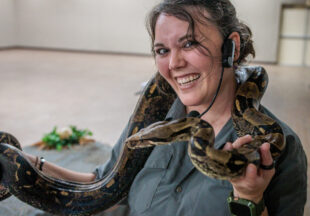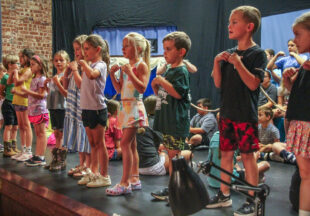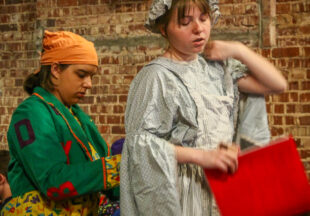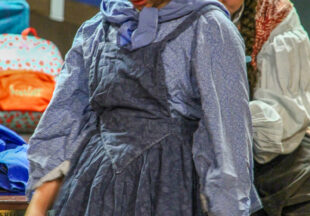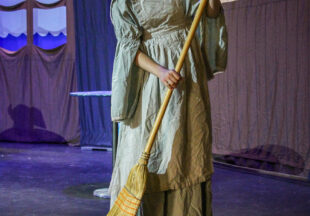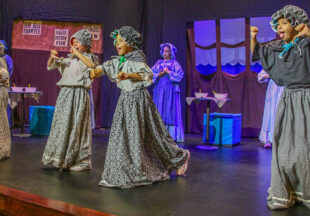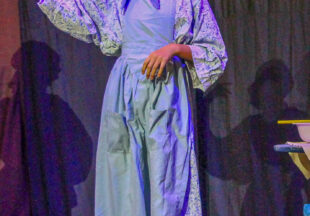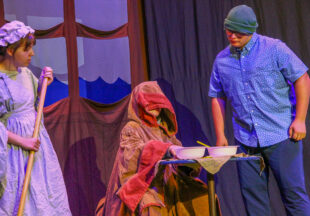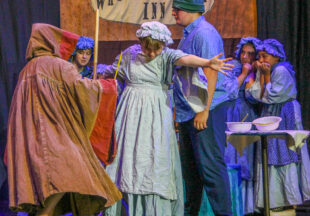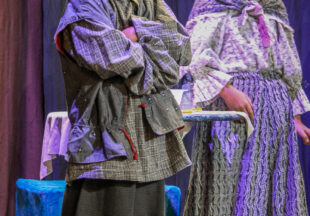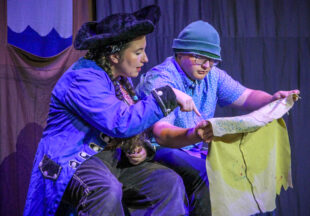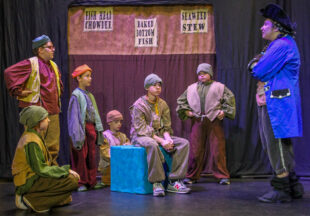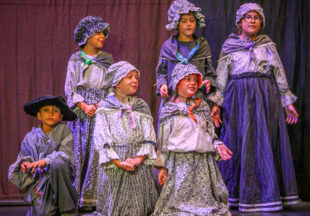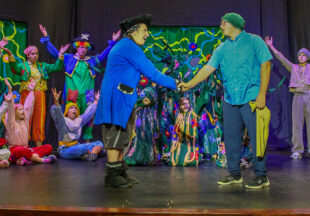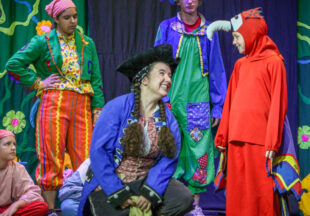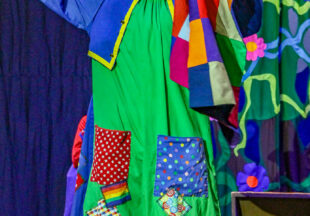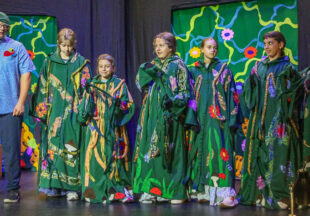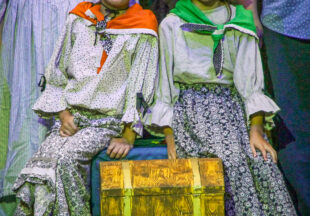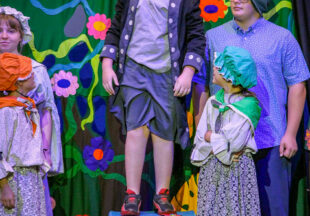Stephens County Chronicles: Jewish residents instrumental to development of early Breckenridge community

By Jean Hayworth/Breckenridge Texan
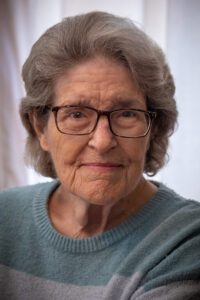
Jean Hayworth
Recent Breckenridge and Stephens County residents may not be aware that there once was a very active Jewish community here, with as many as 83 members by 1930. In 1929, they built a Jewish synagogue, Temple Beth Israel, located at 302 N. Parks St.
Breckenridge photographer Basil Clemons (1887-1964) took a few pictures of the synagogue, as well as many photos that included some of the businesses owned by the local Jewish families. Many of Clemons’ photos are in the Basil Clemons Photograph Collection at the University of Texas at Arlington Libraries.
According to historic records, the first Jewish people to settle in Breckenridge were Anna and Nathan Winkler. He was an immigrant from Hungary, who arrived in Stephens County in 1919, from Fort Stockton, where he had a Dry Goods Store. He also established a similar dry goods store in Breckenridge that catered to the oil field workers. Eventually, Winkler expanded his store to include clothing, shoes, ladies’ ready-to-wear and men’s clothing. The Winkler Building was located at 103-105 W. Walker St., in the area where The Blackhorse Mercantile and Cafe, and Deja Vu Antiques are located today. The couple lived at 301 N. Shelton Ave.
Another Jewish couple to arrive in Breckenridge, a little after the Winkler family, was Charles and Bertha Bender, who came from Lubbock. Initially, they also opened a dry goods store. Subsequently, it became a two-story department store in downtown Breckenridge, located at 215-217 W. Walker St., which is now an empty lot just east of the former Bealls store.

Winkler’s Department Store had an ad sign on a circus elephant parading through downtown Breckenridge in this undated Basil Clemons photo. (Courtesy of University of Texas at Arlington Libraries, Special Collections, Basil Clemons Photograph Collection)
Charles Bender was born in Odessa, Russia, and Bertha was born in Lithuania. The couple met at a Jewish meeting in Portsmouth, Virginia, in 1911 and married in 1912. Initially, the Benders traveled to Dallas, where he established the Star Bottling Co. Later, the couple moved to Lubbock where they opened a dry goods store. Subsequently, they moved on to Breckenridge and opened the two-story Bender’s Department Store, which they operated until 1953. The store carried shoes, men’s clothing, ladies’ millinery and ladies’ ready-to-wear, which was a new thing for women to be able to buy right off the rack. At first, the couple lived at 308 W. Lindsey and then moved to 310 W. Lindsey, where they resided until they left Breckenridge in the late 1950s.
As the 1920s moved forward during the Oil Boom era, other Jewish families moved to Breckenridge and established numerous businesses in downtown Breckenridge. A Sept. 25, 1920, newspaper article explains the Jewish Holy Days and listed the businesses that would be closed for the holidays, including The Globe; Siegel Bros., Ben Fried, jeweler; H. Diamond Jeweler; Paul Raphael, real estate; Bernard Kruger; Bender Bros., dry goods; N. Winkler, dry goods; Weinstein, silk waist shop; Fallas & Cohen; The Popular Dry Goods. That was about nine years before the local synagogue was built, and the services were held in the Odd Fellows Temple, located across from the Sager building on Breckenridge Avenue.
Subsequently, there were 15 Jewish families and 10 individuals, which more than fulfilled the requirement to have 10 males to build a synagogue, which became Temple Beth Israel. Prior to that, the Jewish families met in private homes for Shabbat or would travel to Fort Worth for High Holiday services such as Rosh Hashanah or Yom Kippur. The men soon established a B’nai B’rith Lodge and the women formed a Hadassah Chapter. The Jewish families became an integral part of the Breckenridge community, active in most civic affairs in Stephens County, and their children became active in Breckenridge school activities, in both sports and academics. It is noted that while St. Andrew’s Episcopal Church was being constructed, the congregation met in Temple Beth Israel Synagogue for their church services.
Charles Bender led the way forward to build the synagogue with help from Nathan Winkler, Sam Letwin, Louis Daiches, Benjamin Arlosoroff, Israel Sheinberg, Ben Karelitz, I.A. Wolf, Herman Baum, M. Rosenblatt and I. Baron.

This interior view of Temple Beth Israel in Breckenridge, by Basil Clemons, is undated. However, the Goldring/Woldenberg Institute of Southern Jewish Life identifies a slightly different version of this photo as the “Dedication banquet for Beth Israel’s synagogue in 1929.” (Courtesy of University of Texas at Arlington Libraries, Special Collections, Basil Clemons Photograph Collection)
The synagogue building was constructed of limestone, sandstone and brick. It was crème-colored with arched windows along the sides. Jewish Star medallions were inserted in the pilasters framing the main facade. The cornerstone for Temple Beth Israel can be found at the Swenson Memorial Museum, along with a photo of the Jewish congregation on the day it was dedicated, April 21, 1929, with more than 500 in attendance. Jewish families from the surrounding towns of Eastland, Cisco, Ranger, Graham and Abilene came for the dedication service, along with Charles Bender’s good friend, Rabbi H. Raphael Gold of Dallas, who officiated at the dedication. The architect was Robert P. Davis, and the builder was E. W. Dolgener.
Among the congregation were jewelers S. Segal, Louis Daiches (at 100 E. Walker) and J.C. Whisenant (at 201 N. Miller). Oscar Glickman opened a furniture and appliance store. Marvin Socol and Sam Shapiro opened the historic Popular Store, which carried more high-end men’s clothing. Other Jewish families included Frams, Abramson, Henry Nahm, Cohen, Aaron Kuperman and Al and Tillie Tuck. She was a teacher at South Ward, as South Elementary School was known at the time. Others included an attorney, E.E. Solomon, and the Otto Bendorf family, who operated Breckenridge Oilfield Supply. Their son, Robi Bendorf, was the Breckenridge High School student body president (1962-63). Additionally, Sam and Golda Baccus and C.D. and Maud Kuykendall were members of the community.
The Jewish congregation never had a full-time rabbi but would often have a guest rabbi from Fort Worth or Dallas. They had to rely on lay leaders to conduct the services, which were in Hebrew and English. The men donned a yarmulke (skull cap) and prayer shawls.

The cornerstone from Temple Beth Israel, built in Breckenridge in 1929, is located in the outdoor display area behind the Swenson Memorial Museum in Breckenridge. (Photo by Tony Pilkington/Breckenridge Texan)
By the early 1940s, some Jewish families began to move away. By 1950, there were only 10 Jewish families remaining in Breckenridge. By the 1970s, most Jewish-owned businesses had closed and most Jewish families had left Breckenridge. The Temple Beth Israel building was sold in 1974 and all the proceeds from the sale were donated to local charities in Stephens County. For a while, the building was used by another congregation in Breckenridge, but it was finally sold and became a private home. The building burned on November 28, 2019, which ended the era of a Jewish synagogue in Stephens County.
The family of Marvin Socol was the last major Jewish family to leave Breckenridge in the 1980s. He had run the Popular Men’s Clothing Store until he sold it in 1987.
Charles and Bertha Bender sent both of their sons to school in Israel, where they visited often. Bender was well-known in Jewish circles as the “flamboyant Jewish Cowboy from Texas,” who wore a large Stetson and colorful, pointed-toed boots. In 1957, a large donation was made to establish the Charles and Bertha Bender Laboratory for Aeronautical Research in Israel.
There is a well-known quote found in a 1929 Breckenridge American newspaper: “The presence of Jews in any and every community is a sign of hope and promise … Jews do not stay in dead towns.”
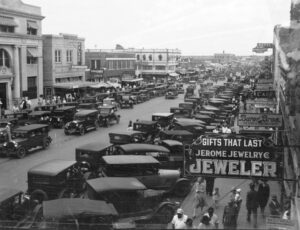
This undated Basil Clemons photo of downtown Breckenridge shows several businesses owned by local Jewish residents, including Winkler’s Department Store and Baron Brothers, pictured on the right side of the image. (Courtesy of University of Texas at Arlington Libraries, Special Collections, Basil Clemons Photograph Collection)
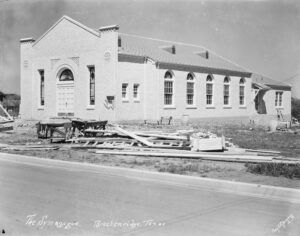
In 1929, Basil Clemons took this photograph of Temple Beth Israel under construction, titling it “The Synagogue.” The building was used by the local Jewish community until the 1970s. It was later privately owned and burned down in 2019. (Courtesy of University of Texas at Arlington Libraries, Special Collections, Basil Clemons Photograph Collection)
Cutline, top photo: This Basil Clemons photo shows the exterior of Temple Beth Israel after it was completed. In the Basil Clemons Photograph Collection at the University of Texas at Arlington, it is grouped with the interior photo above that is elsewhere described as being taken at the synagogue’s dedication service. (Courtesy of University of Texas at Arlington Libraries, Special Collections, Basil Clemons Photograph Collection)






